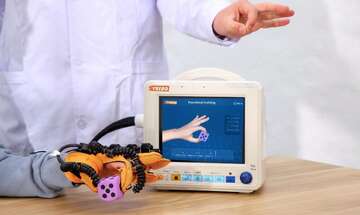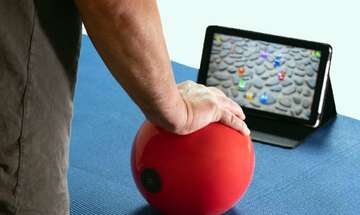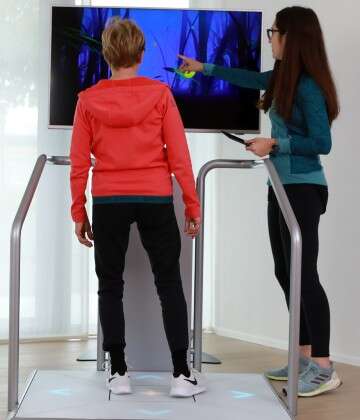Virtual Dolphin Helps with Stroke Rehabilitation
 images: JOHNS HOPKINS MEDICINE
images: JOHNS HOPKINS MEDICINE I Am Dolphin, an interactive game developed at the BLAM Lab at Johns Hopkins University School of Medicine, presents a promising new alternative to traditional therapy for stroke patients.
I Am Dolphin is a new iOS game that may help patients in stroke recovery. Released in August, the game uses the principles of neuroscience and animal physics to immerse players in the movements of a simulated dolphin. The game was developed by a team of researchers, scientists, software and robotics engineers, and artists working at the Brain, Learning, Animation, and Movement (BLAM) Lab at Johns Hopkins University School of Medicine in Baltimore, Maryland.
The team at the BLAM Lab develops video games for neurological research and rehabilitation after stroke and traumatic brain injury. For the dolphin game, they developed their own game engine to be able to create motor-connection simulations of dolphins. At the lab, the patient's arm is placed in a 3D exoskeletal robotic sling and his movements manipulate the dolphin on a screen.


 The digital dolphin, named Bandit, moves like a real dolphin, fights off predatory fish, catches and swallows smaller fish, and leaps for points. What makes the game unique is that it provides visceral feedback, allowing the player to feel that he has become the dolphin, with every smallest movement of his arm registered and reflected on the screen.
The digital dolphin, named Bandit, moves like a real dolphin, fights off predatory fish, catches and swallows smaller fish, and leaps for points. What makes the game unique is that it provides visceral feedback, allowing the player to feel that he has become the dolphin, with every smallest movement of his arm registered and reflected on the screen.


Bandit is not just a simple animation, but the result of extensive research. The virtual dolphin is based on three real bottlenose dolphins and a spinner dolphin. The team of researchers at the BLAM Lab filmed and studied the animals before converting their findings into a hyper-realistic, detailed digital form.
The team at the BLAM Lab has also developed an ant game that helps monitor motor skill recovery in patients recovering from traumatic brain injury. The goal of the game is to guide an ant along a path on the iPad screen by tilting the iPad. The ant game is also used as a crowdsourced research project to track people as their skills improve over time.




John Krakauer, neurologist, neuroscientist, and director of the BLAM Lab, has also co-founded KATA, a video gaming group based on the notion that controlling animal movement with our own movement is highly pleasurable when the animal movement is based on real physics, and that the cognitive interface has huge potential. In the case of Bandit, the virtual animal responds so naturally to the patient's movements that the line between the patient and the dolphin is blurred, if not entirely erased.
I Am Dolphin was released for the iPad, iPhone, and iPod through iTunes and runs on multiple platforms including Windows, Mac, and Linux. In the iOS game, players control the dolphin by moving their finger along the touch screen, while the dolphin responds with realistic motions that simulate those of a real animal.
Clinical trials will be conducted soon to determine if maneuvring the dolphin can help patients recover motor function faster than traditional therapy. The trials will focus on the critical period of enhanced brain plasticity early after a stroke, when the brain is able to repair itself.
To meet the team at the BLAM Lab, learn more about their research, and see what makes Bandit stand apart from other digital solutions used in therapy, watch the video.

 SEND INQUIRY
SEND INQUIRY










